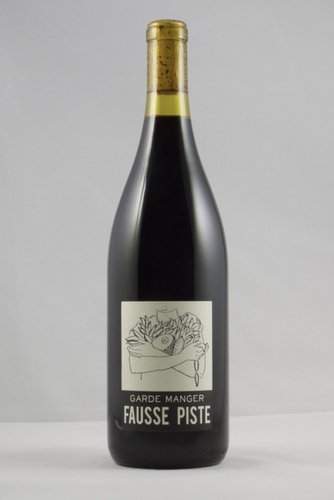BRATTLEBORO — “People have been trying to make wine not taste like this for thousands of years!”
So said my chemist friend, a researcher at a big brewing company, commenting on one of my favorite recent discoveries, the 2014 Garde Manger syrah from Oregon's Fausse Piste winery.
She had a point. There was something faintly savage about the wine. The acid presence that gave it its tart, plummy edge went beyond racy into territory that verged on biting. There was a certain menace to the terroir.
But where she tasted congeners - the often unappealing byproducts of fermentation - I tasted an intriguing wildness elegantly balanced by pure red fruit.
I had encountered the bottle at a tasting at Provisions wine shop in Northampton, Mass., hosted by the winemaker, Portland native Jesse Skiles. Judging wine in such contexts can be tricky, because so much of the experience is about... the experience.
The presence of the winemaker, the convivial atmosphere of a wine tasting, and the stories of vineyard life and the struggle to produce an extraordinary vintage can lead to a friendly bias when it comes to the qualities of the juice itself. (The reason, no doubt, that these events are such excellent selling opportunities.)
But there was something about this particular wine that caught my attention.
* * *
At the tasting, Skiles explained that he takes a “natural” approach in making the Garde Manger.
Natural winemaking is a minimalist method that has recently seen a surge in popularity. Instead of procuring cultured yeasts - of which there are thousands, with names like Montrachet, Pasteur Champagne, and Bourgovin RC 212 - winemakers like Skiles use native yeasts, or those that occur naturally in the vineyard, on the grape skins, and in the cellar.
These winemakers press the juice out of the grapes and then simply allow nature to take its course.
At Fausse Piste, Skiles said, “we foot crush the fruit to kick off fermentation and let that go for about 21 days with punch-downs daily to keep the ferments fresh. We add nothing, using only the yeast present on the fruit, and press the wine directly to older French oak barrels, relying on the tannin from the stems to add backbone to the finished wine.”
During fermentation, the yeast consumes the sugar in the juice and expels ethanol and carbon dioxide, so the sweetness of the developing wine gradually decreases as the alcohol level rises.
In the process, the yeast unlocks various chemical compounds that give the wine its unique aromas and flavors.
Different yeasts lend different qualities to the wines they produce, and the presence of certain bacteria also contributes to the overall effect (as it does, notably, in sour beer, also recently resurgent).
Skiles adds only some sulfites at the end to arrest the yeast and stabilize the finished product.
Because of the diversity of microbial yeasts found in nature, this natural or “spontaneous” approach to fermentation is less controlled than adding a cultured or domesticated yeast, and thus the process comes with more risk that a batch will go wrong. But it can also yield unexpected magic.
In the case of the 2014 Garde Manger, the process seems to me to have struck a perfect equilibrium between tasteful restraint - pleasant and lively flavors of plum and cherry - and out-there, unbridled chaos.
Is it a wine I'd bring to a dinner party? Maybe not. It isn't for everyone - its flavors and structure are too unconventional, that bacterial tang too pronounced.
But for the adventurous - and those curious about the “natural” trend in winemaking - Fausse Piste's Garde Manger is a fascinating place to start.
